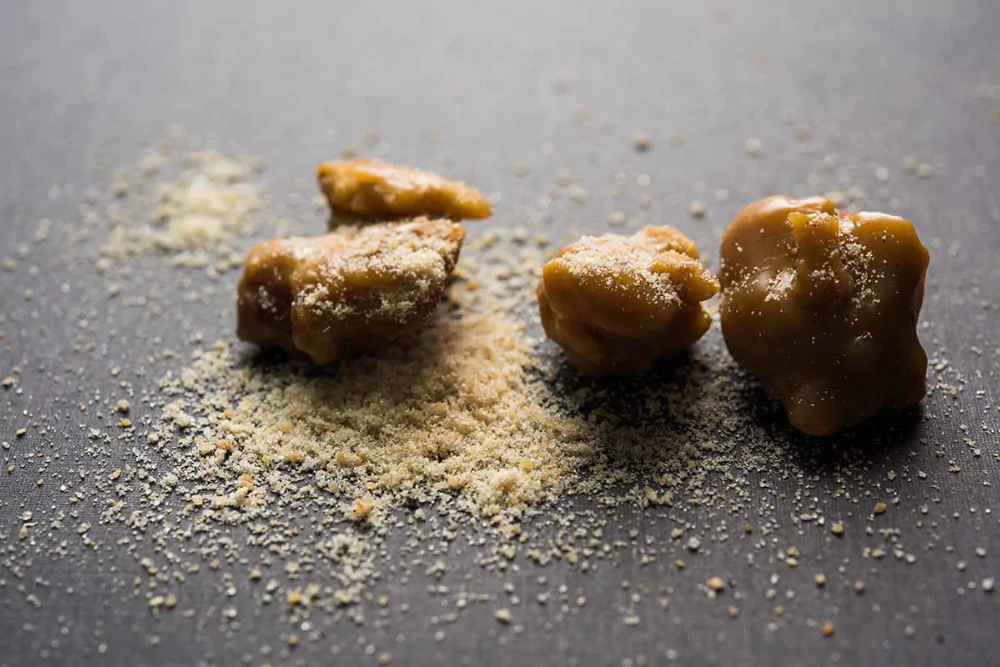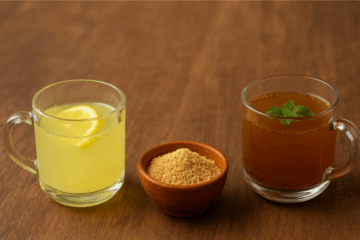Allergies are a common issue that affect breathing, skin, and digestion. Hing, or asafoetida, is widely recognised in Ayurveda and modern studies for its natural antihistamine and anti-inflammatory properties. In this blog, we will explore how Hing for Allergy Relief can be a gentle yet effective remedy.
Can hing really help relieve allergy symptoms like sneezing, congestion, or skin irritation?
Short Answer: Yes, hing can help reduce allergy symptoms such as sneezing, congestion, and skin irritation due to its anti-inflammatory, antispasmodic, and antimicrobial properties.
Detailed Answer:
- Reduces Sneezing & Congestion: Hing relaxes respiratory muscles and reduces inflammation in airways, easing symptoms of hay fever and seasonal allergies.
- Supports Skin Health: Its antimicrobial action helps soothe allergic skin rashes and irritation when consumed in small amounts.
- Improves Digestion: Many allergies manifest as bloating or indigestion, and hing’s carminative properties help relieve such discomfort.
- Balances Immunity: Hing works on stabilising immune responses that trigger allergic reactions, providing natural relief.
How does hing work as a natural antihistamine — is there any scientific or Ayurvedic explanation?
Short Answer: Hing works as a natural antihistamine by reducing histamine release, calming inflammatory pathways, and balancing doshas like Vata and Kapha in Ayurveda.
Detailed Answer:
- Scientific Explanation:
- Hing contains bioactive compounds like ferulic acid and coumarins that regulate histamine release.
- Its anti-inflammatory compounds reduce swelling and irritation in nasal passages.
- Ayurvedic Explanation:
- Hing pacifies Vata (dryness) and Kapha (mucus), which are often imbalanced during allergies.
- Regular intake improves respiratory and digestive health, strengthening the body’s defence against allergens.
- Research Backing: Studies suggest hing’s antioxidant and immune-modulating effects make it effective for allergy management.
What’s the best way to use hing for allergy relief — in food, teas, or as a remedy?
Short Answer: The best way to use hing for allergy relief is through light cooking, warm hing-infused water, or combining it with herbs like turmeric and ajwain.
Detailed Answer:
- Hing Water: Dissolve a pinch of hing in warm water and drink it in the morning to relieve congestion and strengthen immunity.
- Hing Tea: Boil water with turmeric, ajwain, and hing for a soothing anti-allergy drink.
- Cooking Use: Add hing during tadka in dals, soups, or light meals to reduce allergic digestive discomfort.
- Topical Packs: A paste of hing and water applied externally may calm mild skin irritation, though it should be tested for sensitivity first.
Is hing safe for children or people with chronic allergies — are there any side effects?
Short Answer: Hing is safe in small amounts but may cause sensitivity in children or people with chronic conditions if overused. Always introduce it gradually.
Detailed Answer:
- For Children:
- Small doses (a pinch in food) are generally safe.
- Avoid raw hing directly for kids as it may be too strong.
- For Chronic Allergies:
- Can help regulate immunity, but excessive intake may irritate the gut.
- Should be taken in moderation and monitored.
- Possible Side Effects:
- Overuse can cause nausea, gas, or headache.
- Rarely, skin sensitivity may occur when applied topically.
- Safe Dosage:
User Group Recommended Amount Children A pinch in cooked food (not raw) Adults 200-500 mg per day in food Chronic Allergy Patients Start with very small doses; consult doctor
Can hing be used alongside conventional allergy medications or as a preventive remedy during allergy season?
Short Answer: Yes, hing can be used with conventional allergy medicines as a complementary remedy and may also work as a preventive aid during allergy season, but medical advice is essential.
Detailed Answer:
- As a Complementary Remedy: Hing’s natural antihistamine action supports conventional medicines by reducing symptoms faster.
- Preventive Use: Regular intake during allergy season strengthens the respiratory system and lowers chances of flare-ups.
- Safe Combination: Hing does not typically interact with antihistamines, but always check with a doctor.
- Ayurvedic Insight: Taking hing with turmeric and warm water daily before allergy season begins helps prevent congestion and sneezing.
Conclusion
Using Hing for Allergy Relief is a time-tested and scientifically supported approach. Its natural antihistamine and anti-inflammatory properties make it a powerful tool against sneezing, congestion, skin irritation, and seasonal allergies. While hing is safe for most people in moderation, consulting a healthcare professional before combining it with medications ensures the best results. By adding hing to your diet, you can naturally strengthen your body’s defence against allergies while improving overall health.




